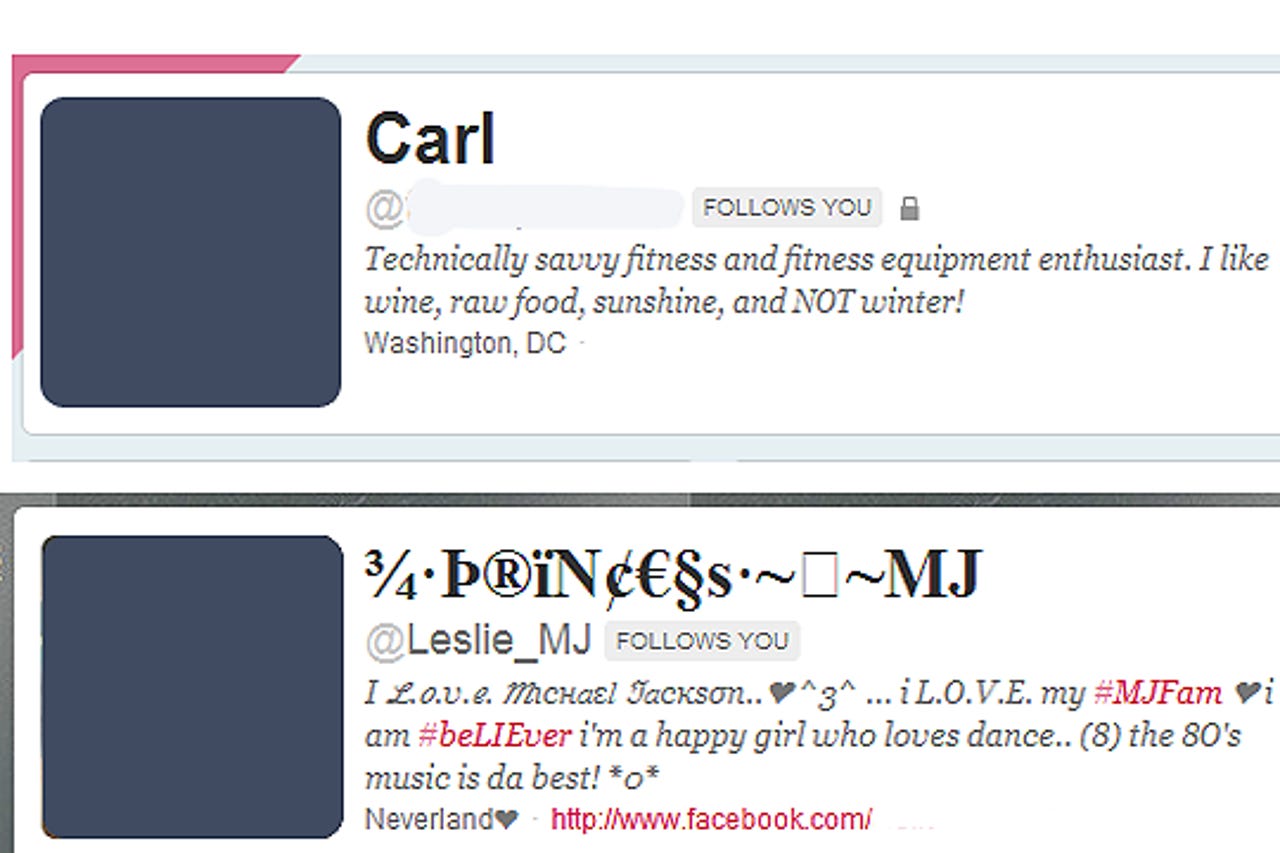The Twitter guide to job hunting


When a user first signs up to Twitter, the easiest way to make a good impression is to spend time filling out your profile with as much information as possible:
- Use your real name, or potentially lose credibility.
- Provide links to a resume and any other professional social network profiles.
- Include credentials, job titles (former or current) and industry specialization.
No-one takes the default 'egg' picture seriously; and you may be mistaken for a spammer or fake account. Instead, upload a professionally branded photo -- preferably the same as any other accounts, such as LinkedIn. A standard or specifically-designed professional background will do -- unless you happen to be in the creative industry, and then you may want to use the space to showcase some of your skill.
After setting up your account, take your time and think of a 'one line' biography to attract the attention of recruiters. If you want to be found by such people, use key words and phrases relevant to your industry.
Not only this, but use Twitter as an extension of your resume. Keep it professional and concise -- the more relevant your Tweets to a target audience, the more likely you are to attract the attention of others who may have connections valuable to you.
If you're seeking a position in the IT industry, why not Tweet interesting news and articles, or offer an opinion or two? Tweeting about your breakfast will impress no-one, but some insight in the latest financial quarter results may.
As a means of connecting to others in your field, it goes without saying that following relevant companies and top industry players will keep you informed of any news or changes -- but it will also make you appear keen, and give you a better picture of the companies on your hit-list.
Interested in sales? Why not follow @Andy_Rudin, @ActionSelling, @B2B_Sales_Leads and @EyesOnSales.
How about technology? Follow @Techmeme, @tynanwrites, @arrington and @dancosta.
The best way to gain exposure on Twitter is to be active and relevant towards a target audience. If you nurture a reputation as an expert in your field, then you are giving potential employers a reason to notice you.
Participate in talks and discussions, follow the latest trends, and offer your perspective to other industry players.
Whether it is a PR representative, a CEO or a top player in your target industry, they have to deal with sycophantic communication every day. If you contact one of them directly with an express intention to plead for work, a positive response is unlikely.
Be friendly, appear interested, and don't push yourself forward -- simply by being connected through social networking opportunities will find themselves in your news feed. Be strategic in who you follow, re-tweet updates that interest you, and contribute to discussions.
There is no reason why online networking has to remain strictly online. If you follow events, conferences and talks relating to your field, it is possible that you may meet those you are already in contact with -- taking your job search a step further.
See also:
- Trends Map: Twitter trends across the globe.
- @TechventsNYC
Lists, which can be found on your profile page, can be a useful feature to both supplement your Twitter following and also to find the most relevant users to follow in your field. In the same manner, if your Tweeted content is relevant and insightful, eventually you will be added to specific lists by other users to find.
See also:
- Just Tweet it: A directory separated by interests.
- Find Twitter lists: A list of resources.
Twitter is full of job postings, aggregated lists and industry-specific opportunities. As a tool to find a new job, Twitter takes away the pain of registering on multiple job agency websites, and cuts the time required to scan through postings for something that looks suitable.
Some services available include:
- twitjobsearch.com
- Twitter accounts: @TweetMyJobs, @LinkedIn, @DisneyJobs, @socialmediajobs, @jobsintech
Hashtags (#) are used to connect themed and specific content. By using Twitter's search tool, you can see individual updates relating to this query -- one I use often is educational technology, otherwise known as #edtech.
For general searches, you can use #jobs, #jobsearch and #jobadvice. Others worth noting include #employment, #dreamjob and #careers.
It is also possible to narrow your search via industry, including #GlobalEd, #STEM, #business, #computing and #travel.
See also:
- The A-Z Dictionary of Twitter Hashtags.
- Hashtags.org: Search and track trends by hashtag.
- TweetChat: Talk in real-time using hashtags.
There is a plethora of free services and software available to organise your Twitter accounts and lists -- two of the most popular being TweetDeck and Hootsuite.
By using these platforms, you can schedule tweets, create automatic replies, and sort your lists and trends you want to follow by columns.
TweetBeep is a valuable tool for the job search, as it allows you to set up hourly updates on job searches or trends in Twitter. You can also set up notifications for replies or particular hashtag updates, personal mentions and links to your content.
See also: